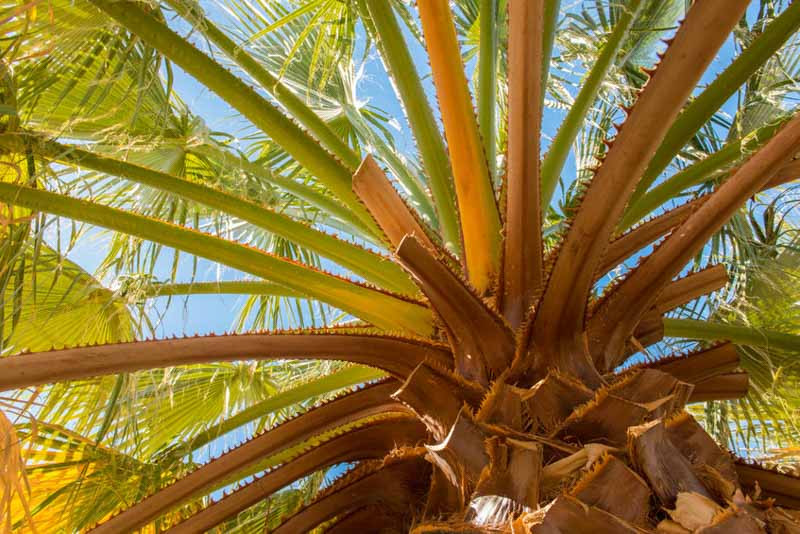Cycas
Palms and cycads are two distinct groups of plants that share a tropical and subtropical aesthetic, making them popular choices for landscaping and indoor gardening. Though they may appear similar at first glance, they have different botanical characteristics and growth habits, which can influence their suitability for specific applications.
Palms are members of the Arecaceae family and are characterized by their large, evergreen leaves, typically arranged in a crown at the top of a single trunk. There are over 2,500 species of palms, ranging from towering giants like the Royal Palm (Roystonea regia) to small, shrubby species like the Lady Palm (Rhapis excelsa). Palms are widely cultivated for their ornamental value, as well as for their edible fruits (e.g., coconuts and dates) and versatile fibers (e.g., rattan and sisal).
Cycads, on the other hand, belong to the Cycadophyta division and are considered living fossils, having changed little since the time of the dinosaurs. They have a stout, typically unbranched trunk topped with a crown of stiff, leathery leaves. Cycads are dioecious, meaning individual plants are male or female, and they reproduce through cone-like structures rather than flowers. There are around 350 species of cycads, with the Sago Palm (Cycas revoluta) being one of the most well-known and widely cultivated.
Both palms and cycads can add a striking, tropical feel to landscapes, gardens, and indoor spaces. However, it is crucial to consider the specific requirements of each plant, such as sunlight, temperature, and soil preferences, to ensure their successful growth and survival. For instance, some palms can tolerate cooler temperatures, while others require consistently warm conditions. Similarly, certain cycads may be more drought-tolerant than others, making them suitable for arid regions or water-conscious gardens.
In conclusion, palms and cycads offer a unique aesthetic and botanical interest to a variety of settings, from outdoor landscapes to indoor collections. By understanding their differences and selecting the appropriate species for your specific environment, you can enjoy the beauty and appeal of these ancient, captivating plants.

